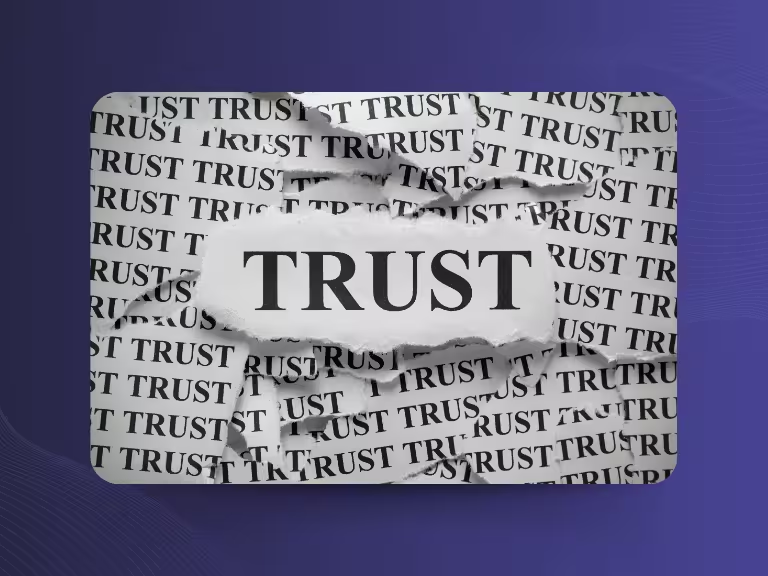Table of Contents
Building Trust in Remote Teams – The Foundation for Successful Collaboration
Remote work is now standard in many companies. But while technology works seamlessly, teams often struggle with an invisible problem: lack of trust. Physical distance makes it difficult to build personal relationships. Misunderstandings occur more quickly, and informal hallway conversations are completely absent.
Yet trust is the key to success. Teams with high trust work 76% more productively, have fewer conflicts, and significantly higher employee satisfaction. Building trust in remote teams is therefore not a nice-to-have – it's a must for any company that wants to be successful long-term.
In this article, you'll learn how to build sustainable trust in your virtual team through structured meetings, clear communication, the right tools, and a strong team culture.
Creating Trust Through Structured and Personal Meetings
Establishing Regular Meeting Rhythms
Trust emerges through predictability. When your team knows when it will meet and what will be discussed, it creates security. Weekly team huddles and daily stand-ups should be fixed appointments in every calendar – not optional, but essential.
The trick lies in structure: Every meeting needs a clear agenda that's shared beforehand. A 30-minute team huddle could look like this: 10 minutes for personal updates, 15 minutes for project status, and 5 minutes for open questions. This reliability gives all participants the feeling of being informed and involved.
Fostering Personal Interactions
Video calls are absolutely essential for trust in remote teams. Facial expressions, tone of voice, and small gestures convey so much more than any message. Leaders should therefore always work with cameras and encourage the team to do the same.
Particularly valuable are short check-ins outside of official meetings. A five-minute "how are you?" call can work wonders. Some teams even use virtual "water cooler zones" – open video rooms where team members can dial in for spontaneous conversations. This replaces random hallway chats and creates genuine human connections.

Clear Goals, Open Communication, and Appreciative Feedback
Transparent Goal Setting and Expectations
Nothing destroys trust faster than uncertainty. When team members don't know what's expected of them, stress and mistrust arise. Therefore, goals must be crystal clear and measurable.
An example: Instead of "Improve customer satisfaction," it should be "Increase the average customer rating from 4.2 to 4.5 stars by the end of the quarter." This precision helps everyone understand what they're working on and how success is measured.
Collaboration tools like Asana or Trello are indispensable here. They make progress visible and show everyone who's working on what. Transparency is the best trust builder – when everyone can see what's happening, no speculation arises.
Fostering Open and Safe Communication Culture
Trust needs psychological safety. Team members must feel comfortable admitting mistakes, asking questions, and sometimes disagreeing. This only works when the communication culture is right.
Regular feedback rounds are essential. Once a month, every team should take time to honestly discuss: What's working well? What could be better? How is everyone feeling? Tools like Slack or Microsoft Teams support this culture by creating open channels for discussions and feedback.
A practical example: A software development team conducts a "kudos round" every Friday. Everyone mentions one thing a colleague did well this week. This only takes ten minutes but sustainably strengthens trust in the team.

Technologies and Digital Tools as Trust Accelerators
Using Collaborative Platforms
The right tools can significantly accelerate trust in remote teams. Platforms like Asana, Trello, or Jira make work processes transparent and traceable. Everyone sees who's doing what, how far projects have progressed, and where support might be needed.
This transparency is invaluable. When all decisions are documented and accessible to the team, no rumors or speculation arise. An example: A marketing team uses Asana to plan campaigns. Everyone can see which tasks are due when, who's responsible, and what the current status is. This creates trust through clarity.
Tools for Feedback and Social Interaction
Specialized feedback tools like Officevibe or 15Five help collect regular and structured feedback. These platforms allow team members to express their opinions anonymously or openly, creating a safe space for honest communication.
For documenting important conversations and decisions, tools like Sally can be very valuable. As an AI meeting assistant, Sally participates in video conferences, transcribes conversations, and automatically creates summaries. This creates transparency and ensures all team members have the same information – an important building block for trust.
Virtual social spaces are equally important. Some teams use Discord servers or special Slack channels for informal conversations. Others organize regular online games or virtual coffee breaks. These social interactions are not "nice-to-have" but essential for relationship building.
A Healthy Team Culture, Responsibility, and Long-term Trust Strategy
Creating Positive and Inclusive Team Culture
Trust thrives in a culture that sees mistakes as learning opportunities. Teams that fear mistakes will never reach their full potential. Instead, leaders should foster a "fail-fast-learn-fast" mentality.
Shared values and rituals strengthen the sense of "we." An example: A consulting company introduced a "wins & fails" round every Monday. Team members share one success and one failure from the past week. This creates openness and shows that everyone is human.
Psychological safety is the foundation here. When people feel safe to express their opinions, the best ideas emerge and the strongest trust develops.
Delegation, Autonomy, and Role-specific Approaches
Trust shows itself through responsibility. When leaders delegate important tasks and give team members decision-making freedom, it signals genuine trust. This is tremendously motivating and strengthens the bond to the team.
Different roles need different approaches. Leaders must particularly actively build trust – through regular communication, transparency in decisions, and support during challenges. Team members, on the other hand, benefit from clear roles, constructive feedback, and the freedom to develop their own solutions.
A practical example: An IT team introduces "ownership meetings." Each developer takes responsibility for a specific project and regularly presents the status. This creates accountability and shows trust in each individual's abilities.
Sustainable Trust Building Through Feedback and Evaluation
Trust is not a project with an end date – it's a continuous process. Successful teams regularly measure their trust level through employee surveys, turnover, and team satisfaction.
Especially in global teams, cultural differences play an important role. Intercultural communication training can prevent misunderstandings and strengthen trust between different cultures. What counts as direct communication in Germany might be perceived as rude in other cultures.
A long-term trust plan should contain concrete goals: "By the end of the year, we want to increase employee satisfaction from 7.5 to 8.5 points." This measurability helps recognize progress and adjust when necessary.
Conclusion – How to Successfully Build Trust in Remote Teams
Building trust in remote teams is not magic, but a matter of the right strategy and consistent implementation. The combination of regular, personal meetings, clear goals, and an open feedback culture forms the foundation.
Technological tools like Sally for meeting documentation, Asana for project management, or Officevibe for feedback can significantly accelerate this process. But they never replace the human component – genuine conversations, empathy, and personal connections.
The key lies in long-term commitment. Trust doesn't build overnight, but through continuous, authentic interactions. Teams that follow these principles benefit from higher motivation, better collaboration, and significantly fewer conflicts.
The result? A remote team with genuine cohesion that delivers peak performance even at a distance and supports each other. In today's work environment, there's hardly anything more valuable.

Try meeting transcription now!
Experience how effortless meeting notes can be – try Sally free for 4 weeks.
Test NowOr: Arrange a Demo Appointment




